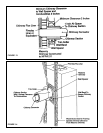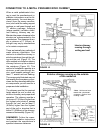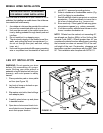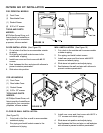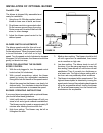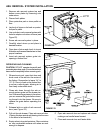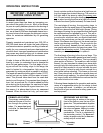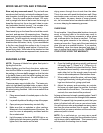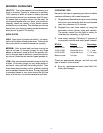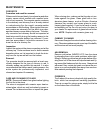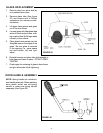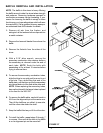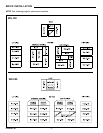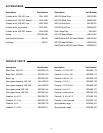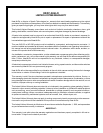
22
MAINTENANCE
CREOSOTE
Formation and need for removal:
When wood is burned slowly, it produces tar and other
organic vapors which combine with expelled mois-
ture to form creosote. The creosote vapors condense
in the relatively cool chimney flue of a newly-started
or a slow-burning fire. As a result, creosote residue
accumulates on the flue lining. When ignited, this creo-
sote creates an extremely hot fire which may dam-
age the chimney or even destroy the house. The chim-
ney connector and chimney should be inspected at
least twice monthly during the heating season to de-
termine if a creosote buildup has occurred. If creo-
sote has accumulated, it should be removed to re-
duce the risk of a chimney fire.
Inspection:
Inspect the system at the stove connection and at the
chimney top. Cooler surfaces tend to build creosote
deposits quicker, so it is important to check the chim-
ney from the top as well as from the bottom.
Removal:
The creosote should be removed with a brush spe-
cifically designed for the type of chimney in use. A
chimney sweep can perform this service. It is also
recommended that before each heating season the
entire system be professionally inspected, and
cleaned and repaired if necessary.
CARE AND CLEANING OF GLASS
NOTE: Remove all labels from glass before lighting
the first fire in the stove.
The stove is equipped with ceramic super heat-re-
sistant glass, which can only be broken by impact or
misuse. Do not slam stove door or impact the glass.
When closing door, make sure that logs do not pro-
trude against the glass. Clean glass with a non-
abrasive glass cleaner, such as Windex. Abrasive
cleaners may scratch and cause glass to crack.
Inspect glass regularly. If you find a crack or break,
immediately put the fire out and return the door to
your dealer for replacement of glass before further
use. NOTE: Replace with ceramic glass only.
CHIMNEY CLEANING
Disconnect flue pipe from stove before cleaning chim-
ney. Otherwise residue can pile up on top of the baffle,
and the stove will not work properly.
ASH REMOVAL
Remove cold ashes (NEVER HOT) from the stove
by shoveling them into a metal container with a tight-
fitting lid. Spraying cold ashes with water before shov-
eling them out of the stove will help eliminate ash fly-
ing around the firebox and into the room. Always treat
ashes as if they contain hot coals, and store the con-
tainer on a noncombustible floor away from combus-
tible material pending final disposal.
FIREBRICK
The firebox of the stove is lined with high quality fire-
brick, which has exceptional insulating properties.
There is no need for using a grate; simply build a fire
on the firebox floor of the stove.



